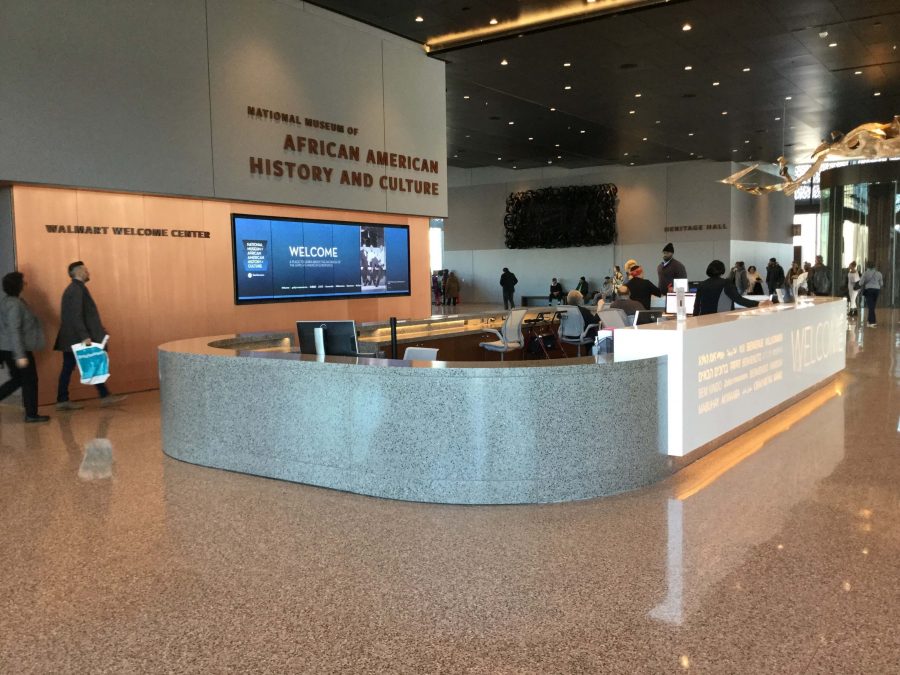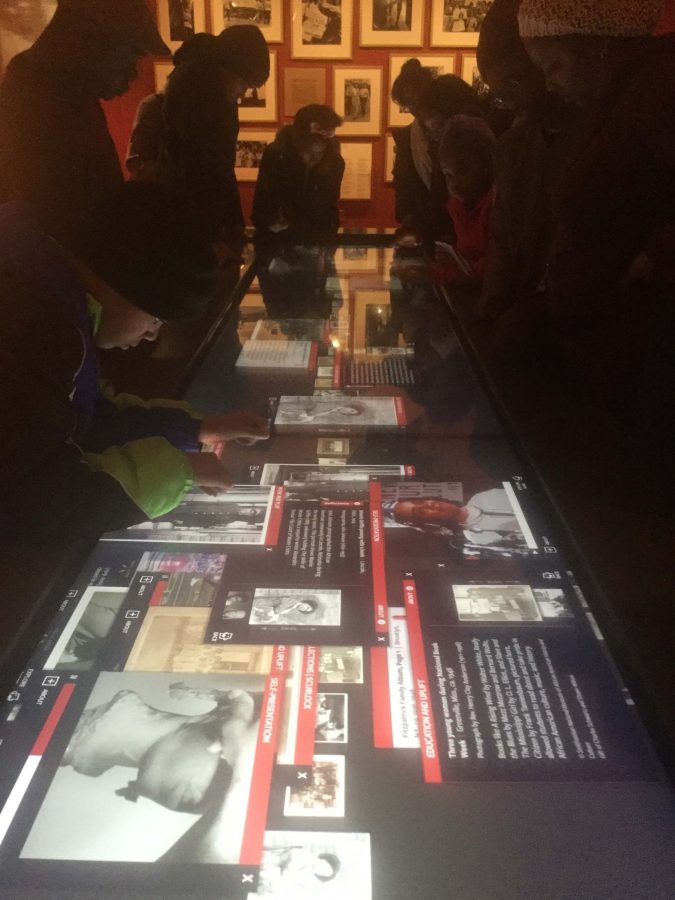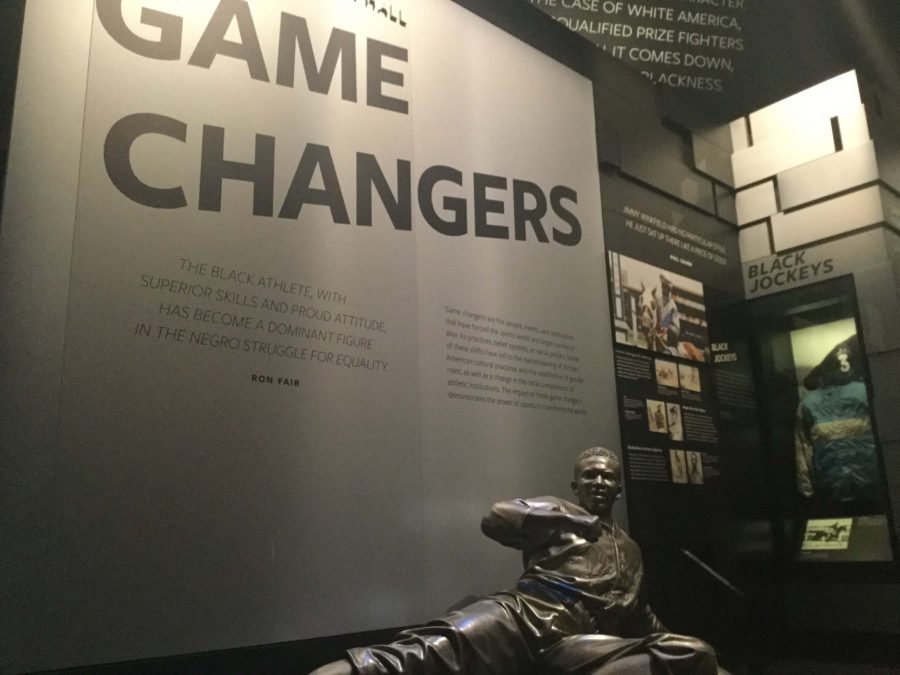A Day in DC : National Museum of African American History and Culture
December 27, 2016
The National Museum of African American History and Culture (NMAAHC) opened on Sep. 24 following much anticipation and interest surrounding the museum’s construction. Immediately following its opening, I scrolled through the website’s online signup system, only to realize that the next available tickets were slotted for Dec. 19. After three months, I was finally able to visit the NMAAHC on Monday, Dec. 19, along with the Newseum, which I decided to add on after hearing much about the museum.
A Day in DC: The National Museum of African American History and Culture
The architecture of the NMAAHC fully engages , and is one of the first aspects of the NMAAHC that a visitor notices once entering the lobby. A rippled copper sculpture prostrates itself against the ceiling, while glass, rounded walls close in the Corona Pavilion. Granite-paved floors leave plenty of comfortable open space for the visitor, while various prints, paintings, and sculptures are interspersed among sections of gray wall.
An elevator takes me to the Concourse level, where long lines convince me to go to the second floor instead. Black marble staircases lead me up to the entrance level again, where an escalator takes me up to the second floor. While riding the escalator, I look up and see the copper plating that’s slated across the building’s glass exterior, part of the distinctive bowl-like structure that passersby could see during most of the museum’s ten year construction period.
The second floor featured a red, plastic-enclosed art and photography exhibit, and a step dance display that invited visitors to join in on its lesson.
Following exhibits featured the harsh conditions experienced by African-Americans under slavery, a penitenciary system (“Slavery by Another Name”), and recovery through athletics, education, literature, medicine, business, humor, and music.
I think the vigor and beauty of our black poets should be better known and should have an outlet.
Dudley Randall, 1975
Overall, the NMAAHC showed obvious signs of attention to detail and respect for African-American culture. From an outsider’s perspective, I can not think of any other aspect of black culture that was not covered in this museum. My journey through the NMAAHC touched me in a way that increased my regard and empathy for the struggles that African-Americans faced. Though the Newseum’s heroic tales of daring journalists captivated me more than the cultural stories that lay in the NMAAHC, I completely recommend this museum to any who is lucky enough to secure a ticket during a spare holiday or two.








